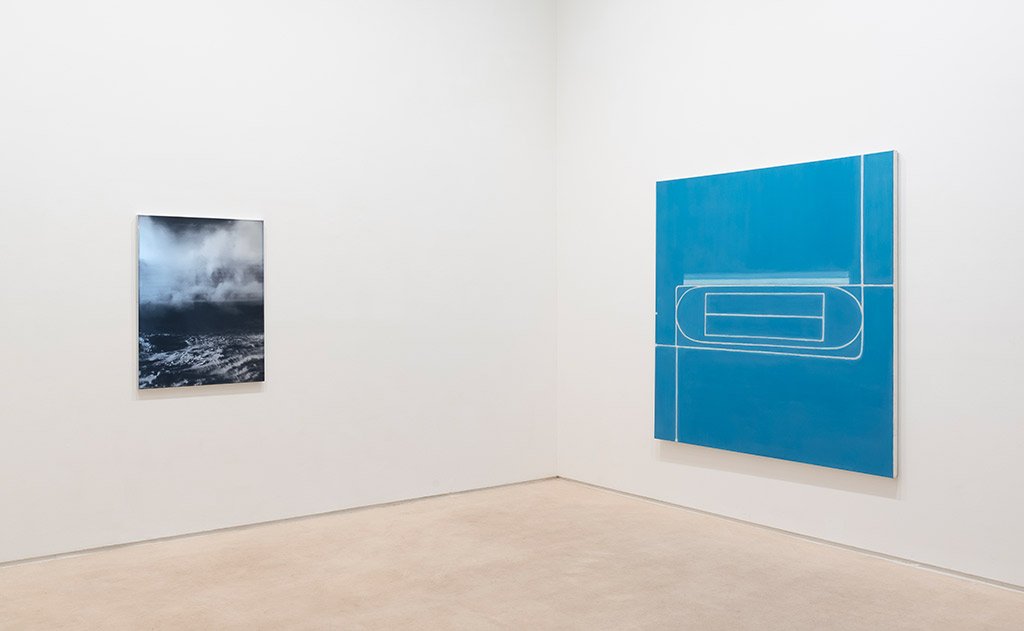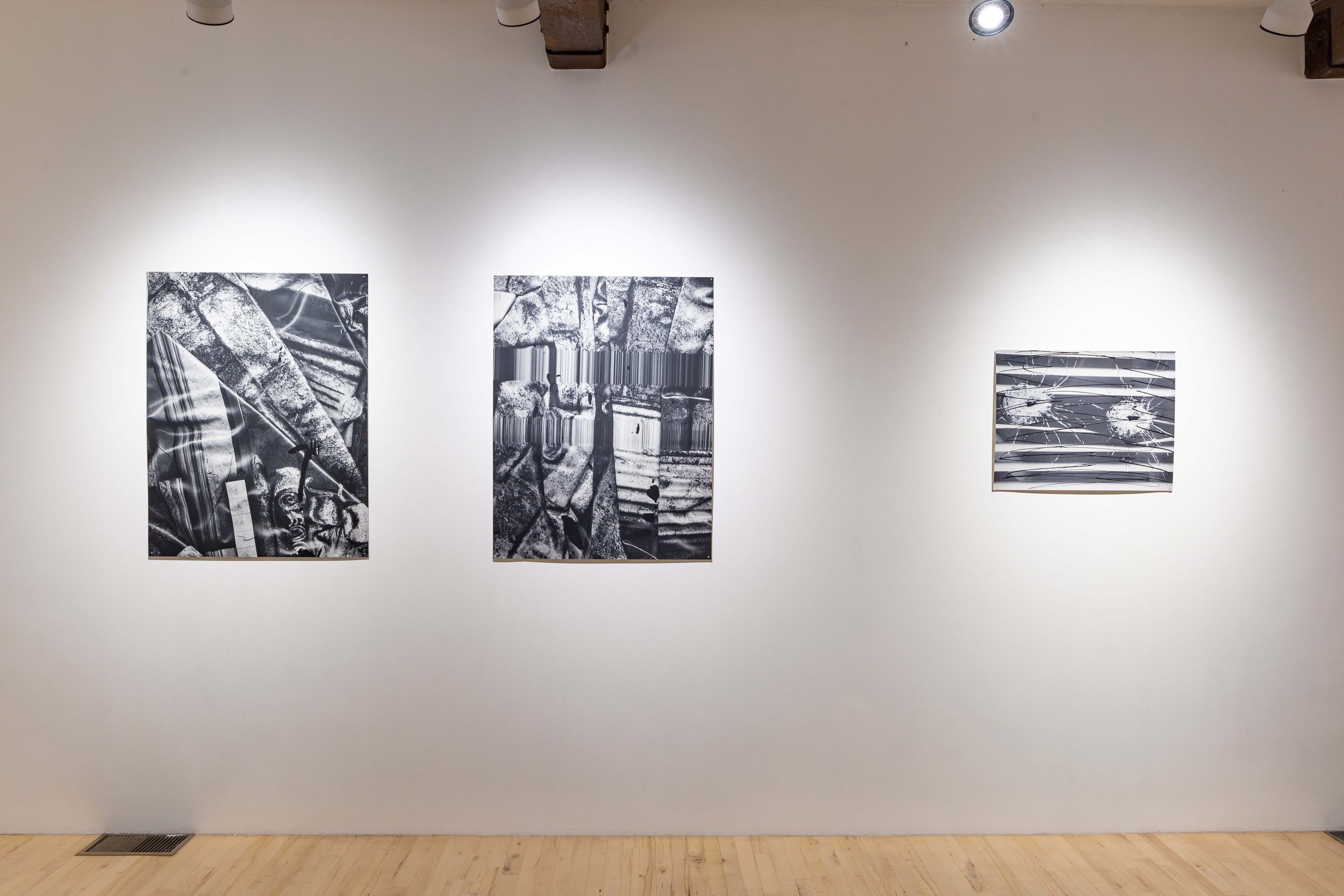Accrochage 2.1
Miguel Abreu Gallery: 36 Orchard st NY, NY 10002
September 4 — November 2, 2024



As it turns out, the unintentional theme of the show is the appearance of a veiled figure in a number of the works included in the exhibition. In Jimmy Raskin’s STATION 9, a full-length image of the artist in a black suit with his head cropped out emerges symmetrically on both sides of a central cone shaped graphic. He stands in what resembles a blurry autumn landscape. A portrait of Martin Luther by Lucas Cranach is revealed in a 19th-century etching of the painting by Friedrich Müller. It was famously discovered by R. H. Quaytman as lying behind Paul Klee’s Angelus Novus and constitutes the subject of חקק, Chapter 29. In Blake Rayne’s Spit Test, cloud like gestural formations dominate the composition. A network of black lines to the right point to a possible stick figure. For his part, Jean-Luc Moulène’s positive, filled out rendition of a wild boar’s rib cage might bring to mind the head of a garden gnome. Finally, the oversized head of a man in profile emerges out of darkness in Raha Raissnia’s Untitled painting which closes the exhibition.
If the destiny of art is to manifest the invisible, this grouping of works pays homage to that mystery.
Accrochage 2
Miguel Abreu Gallery: 88 Eldridge Street, NY, NY 10002
July 8- September 7 2024
Link: Miguel Abreu
Miguel Abreu Gallery is pleased to present accrochage 2, an installation of works in conversation by gallery artists. In the entrance hallway gallery, highlights from our recent group show When Image Processing Became Painting will be on view.
New Directions: Recent Acquisitions
George Eastman Museum : 900 East Avenue, Rochester, NY 14607
March 16, 2024 – October 6, 2024
Link: Kodak Museum
As part of the slate of programs in honor of the 75th anniversary of the public opening of the George Eastman Museum, New Directions: Recent Acquisitions features work acquired by the museum over the past five years and showcases significant developments in photographic practice. The exhibition title echoes New Acquisitions/New Directions/New Work, 1981–1989, organized by curator Robert Sobieszek on what was the museum’s 40th anniversary.
Throughout New Directions, the photographic image figures as a tool to fortify—but also unsettle—ideas about history and identity. Performances staged for the camera enable artists to explore and break with the conventions of gender, making the home or studio an experimental theater for engaging the world at large. While some of the artists embrace photography as a documentary medium, others develop strategies to destabilize the authority of the image. Some work to explicitly make visible the myriad ways that the past shapes the present. As instruments of power, archives become platforms to be challenged, subject to reinterpretation and reconfiguration. Found and appropriated materials offer practical, but also critical, approaches to reflecting on contemporary life and the status of images in the digital era. Likewise, recent approaches to the natural environment and the human landscape register the legacies of modern warfare, industrial pollution, and social inequity.
Alongside photographs made in the past decade, the exhibition includes works by artists who were often overlooked or marginalized in the past, but whose contributions are touchstones for contemporary art.
Under Water
Granary Arts: 86 N Main Street, Ephraim, Utah 84627
May 22, 2024- September 20, 2024
Link: Granary Arts










Under Water includes thirteen photographic works that span ongoing series in Eileen Quinlan's creative practice. Through a meticulous examination of contemporary environmental and political conditions, Quinlan’s abstract works of decaying analog film and recontextualized appropriated imagery, explore themes of propaganda and spectacle, celestial and natural environments, and domestic narratives.
Permanent Collection
Art Institute of Chicago: 111 South Michigan Avenue, Chicago, IL 60603
Link: AIC








